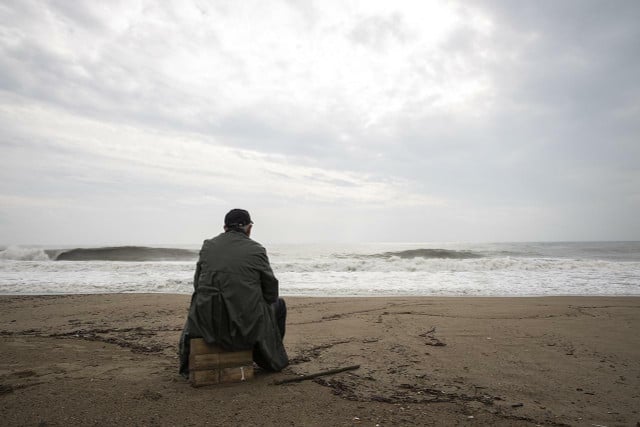
Stiff neck again? We explain the situations in which drafts can arise and give you tips on how to protect yourself from them.
Maybe you’ve experienced this before: out of nowhere you suddenly have back or neck pain. You didn’t put your body under too much strain. It can also have another cause, namely drafts. This is air that you often perceive as flowing and cold. If your neck or back is exposed to this airflow for a long time, pain can occur.
Drafts can also be a sign that your apartment or room is not well sealed. This can mean wasted energy and high heating bills in winter. Knowing how drafts develop and how to prevent them is not only good for your health, but also for the environment and your wallet.
Typical draft situations

(Photo: CC0 / Pixabay / cocoparisienne)
There are several “draft” situations that favor catching a hit. Examples are:
- drive in an open convertible or open the windows when driving
- alternating between heat and an air-conditioned room – especially if it is below 20 degrees Celsius, this can make you ill
- sit directly in front of an air conditioner or fan
- sleeping in the apartment with the windows open so that there is a draft
- staying in rooms where windows and doors are not well sealed, allowing drafts in cold winds
This is how your body reacts to drafts

(Photo: CC0 / Pixabay / Engin_Akyurt)
When there is a strong gust of wind, the skin vessels contract to keep the body warm. Unfortunately, if you sit in a draft for a long time, this protective mechanism does not work: the muscles in the neck and back can tense up more easily because the skin temperature drops over a long period of time. This cools down the muscles, they are no longer properly supplied with blood and become tense.
Note: Drafts can be a problem, especially in summer, because we wear light clothing without a scarf or turtleneck.
Four tips to avoid drafts
We have four tips for you on how to deal well with drafts:
- Cover your neck with a bandana, scarf, or collar when sitting in an air-conditioned place for a long time. These would be, for example, train compartments, restaurants or cinemas. Warmer clothing also helps you stay warm in winter without using too much heating energy.
- If you’re prone to drafts, you should avoid leaving windows open for long periods of time – whether in the car or in the bedroom overnight. Instead, ventilate regularly to cool the rooms. In winter, you should ventilate for even shorter periods to prevent exactly this heat loss.
- By sealing windows, you avoid drafts and heat loss.
- Sealing doors also helps stop drafts.
- Avoid fans and air conditioners in summer that cause drafts. At the same time, you save energy immediately. Instead, find alternatives to cool down:
- For example, you can darken the apartment with sheets so that the sun does not charge the apartment directly. Or you can get an insulating curtain. This can be worthwhile if you often struggle with strong sunlight and heat in the apartment.
- You can also hang wet towels to increase the humidity in the room. However, make sure that you ventilate enough and properly to prevent mold growth.
- You can also make sure to drink plenty of fluids and cool your face, feet, and wrists with cold water.
What to do if you have problems with drafts?
If you have muscle tension or a stiff neck lasting several days or weeks, you should seek medical advice. It may be that not only drafts, but perhaps an overload of your muscles or psychological problems can be the trigger for your pain.
Tip: You should also keep your back healthy by building muscle for a longer period of time. So she can cramp less. A back school, the costs of which are partially covered by health insurance, can prevent back pain. Especially in the home office, it is also important to make sure that you are sitting correctly. Check out our work-from-home yoga practices and learn how to set up your home office properly to prevent tension and other frustrations.
Read more on Techzle.com:
- Back massage: tips and tricks for a relaxing massage
- Back training: simple exercises for strong muscles
- Heat in the office: What you can do about it